Preventing Sexual Assault
The final report of the University’s task force on the prevention of sexual assault, chaired by former provost Steven E. Hyman, recommended that each Harvard school institute mandatory, annual assault-prevention training for all students—with special emphasis on alcohol education for undergraduates. The report, issued March 8 and accepted for implementation by President Drew Faust, also proposed a new senior position, reporting to the provost, to coordinate activities University-wide relating to sexual assault and harassment—including prevention, response to incidents, and education. And it called for additional resources for the bisexual, gay, lesbian, transgendered, and queer (BGLTQ) community, where survey results showed the incidence of sexual assault is disproportionately high.
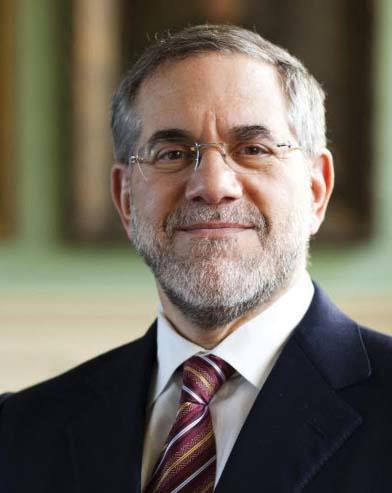
Steven F. Hyman
Photograph by Stephanie Mitchell/HPAC</p>
The task force also focused attention on private single-sex final clubs, in light of their “disproportionate influence on campus culture” and evidence that they help “perpetuate an environment where sexual assault occurs” with disproportionate frequency. Accordingly, the task force urged the College to pursue “nondiscriminatory and open membership practices” at the clubs—and, failing changes in behavior, to pursue “any alternative approaches” that the University may find necessary. The discussion of final clubs was part of the report’s larger focus on community and culture—“what it means to be a citizen of this campus and the nature of our responsibilities to one another.” Read a detailed report at harvardmag.com/assault-16.
A Shield Retired
Following the recommendation of a Harvard Law School (HLS) committee (see harvardmag.com/hlsshield-16), the Corporation on March 14 agreed to retire the school’s shield (see harvardmag.com/shield-16).
The shield, adopted in 1936, is modeled on the coat of arms of the slaveholding Royall family, whose fortune endowed Harvard’s first professorship of law. In their letter to Dean Martha Minow conveying the Corporation’s decision, President Drew Faust and Senior Fellow William F. Lee wrote that the school should “have the opportunity” to propose a new shield, perhaps in time for its bicentennial next year—“one conducive to unifying the law school community rather than dividing it.” In so doing, the Corporation proceeded “on the understanding that the school will actively explore other steps to recognize rather than to suppress the realities of its history, mindful of our shared obligation to honor the past not by seeking to erase it, but rather by bringing it to light and learning from it.”
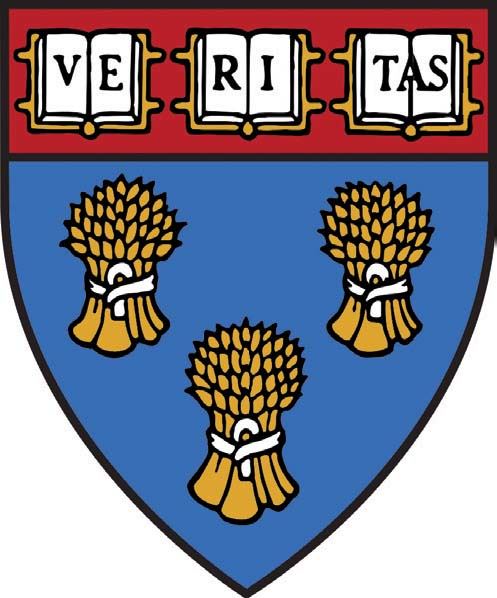
Meanwhile, as students on many other campuses challenged their schools’ historical connections to slavery and racism, Amherst College trustees agreed to drop the “Lord Jeff”[rey Amherst] mascot, acknowledging that British commander’s ties to efforts to kill Native Americans with smallpox-contaminated blankets. Calhoun College, a Yale undergraduate residence, has removed three portraits of John C. Calhoun, a leading secessionist and defender of slavery (and the name of the residential college is under reconsideration). And Brown faculty members endorsed a student suggestion to rename Columbus Day as Indigenous People’s Day.
“House Master” No More
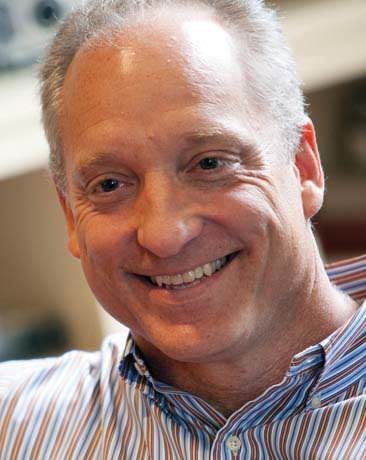
Michael D. Smith
Stephanie Mitchell/HPAC
Faculty of Arts and Sciences (FAS) dean Michael D. Smith announced in late February that the leaders of undergraduate Houses would now be called “Faculty Dean,” supplanting the prior title, “master” (see harvardmag.com/masters-16). In his notice, Smith responded to criticisms that the change reflected a misunderstanding of the etymology of “master” (as possibly connected to America’s history of slavery), or “that we lacked a proper appreciation for the history of the title at Harvard and the European institutions” from which it derived. Not so, he said: “Titles can and should change when such a change serves our mission”—in this case, reflecting House leaders’ “high standing in the joint academic and administrative hierarchy of the College.”
The Campaign Comes Closer
Although no formal report has been issued on The Harvard Campaign’s progress through last December 31, data from a number of schools suggest that the fundraisers had already come close to their nominal goal of $6.5 billion—with three years to go until the drive concludes at the end of 2018. Since the campaign reported gifts and pledges of $6 billion by mid 2015, at least $200 million more has been recorded, with the Kennedy and Business Schools nearing their overall goals. Every school has passed its halfway mark, and President Drew Faust announced at a Boston campaign event on March 1 that $730 million had been secured for financial aid, a principal goal. Fundraising totals for the Faculty of Arts and Sciences and its engineering and applied sciences school, the Law School, and central University priorities (such as the new engineering complex in Allston) have not yet been updated; they represent, collectively, about half the overall campaign, so it seems certain that the drive was well past the $6.2-billion mark as 2016 began. Read a detailed report at harvardmag.com/campaigngoal-16.
A Graduate-Student Union?
The Harvard Graduate Students Union (HGSU), which began collecting signatures in support of unionizing last fall, reported that a majority of graduate students whom they consider workers—those who teach or work in labs as part of their degree programs—have signed up (see harvardmag.com/union-16). The National Labor Relations Board (NLRB) has ruled in previous cases that graduate students aren’t entitled to collective bargaining rights, but students and administrators nationwide are awaiting a decision that could reverse that position, forcing Harvard and other private institutions to recognize graduate-student labor unions. In late February, Harvard and eight peer universities filed an amicus brief with the NLRB, arguing against a requirement that private institutions recognize such unions (see harvardmag.com/labor-16). In the meantime, with student organizers focusing on disparities in child-care subsidies and insurance costs, the University doubled, to 12 weeks, paid time off from teaching or research for graduate students who become new parents (harvardmag.com/gsas-16).
Lowell House Offline
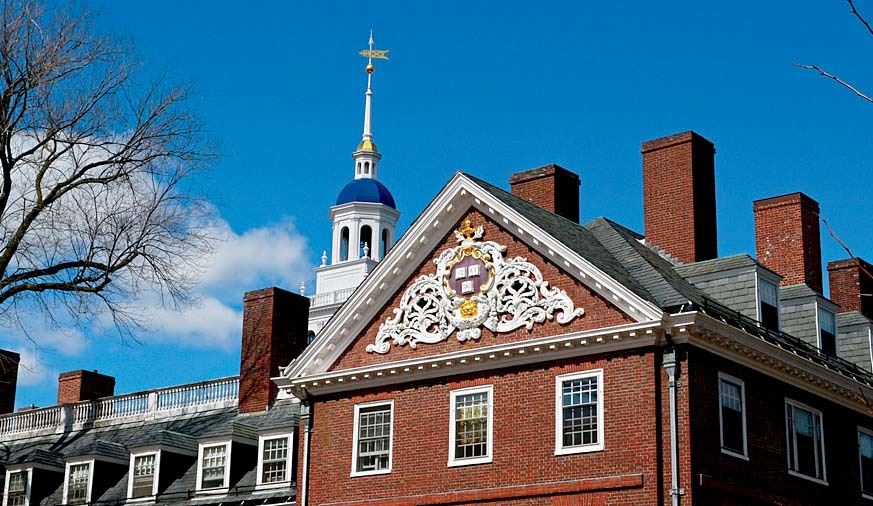
Lowell House
Photograph by Harvard Magazine/JC
Given Lowell House’s size and complexity, its renovation—part of the renewal of undergraduate residences—will require two years, twice the duration of the Dunster project (already completed), and Winthrop’s refurbishment and expansion (scheduled to begin right after Commencement). The work on Lowell, the House leaders disclosed in February (see harvardmag.com/lowell-16), will last from the summer of 2017 until students move back in for the fall term in 2019: imposing a protracted period of residence in the repurposed Inn at Harvard and nearby apartment buildings along Massachusetts Avenue and Prescott Street. When they are redomiciled, President Drew Faust told a capital-campaign event in early March, one-third of upperclassmen and -women will reside in renovated space. Adams, Eliot, and Kirkland, meanwhile, remain on deck (and perhaps the not-yet-renewed parts of Leverett and Quincy, plus the Quad Houses)—an indication of the large scale of House renewal overall.
Allston Advances
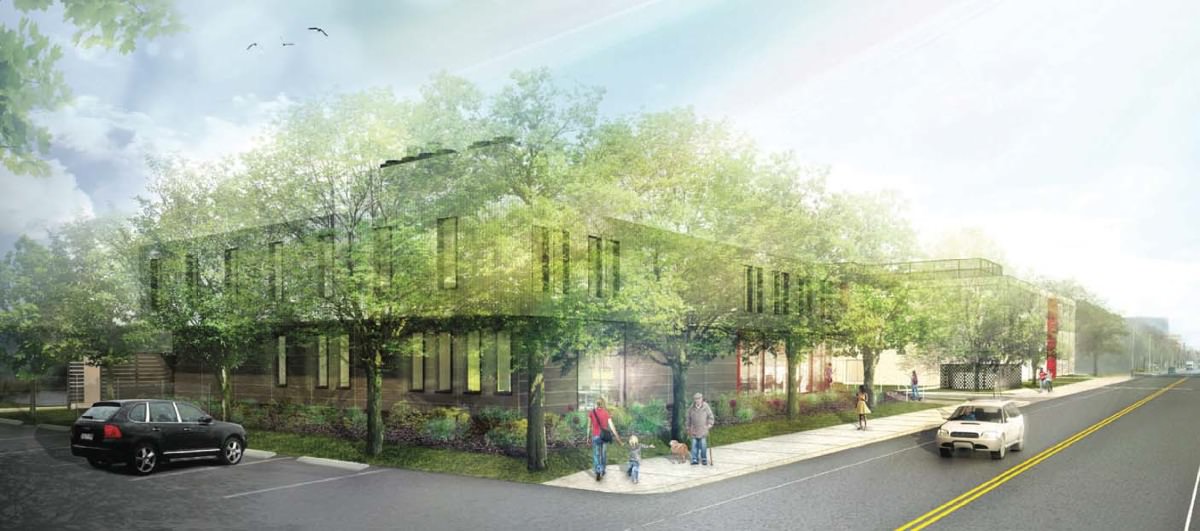
The planned Life Lab in Allston
Rendering courtesy of the Boston Redevelopment Authority
As winter turned to spring, the University advanced its development plans for Allston. In mid March, the Boston Redevelopment Authority approved the “Life Lab,” a new facility adjacent to Harvard’s entrepreneurial i-lab, designed to accommodate growing infrastructure for life-sciences ventures. (The i-lab itself is not equipped with laboratories.) BRA action on the Science and Engineering Complex—new construction and a renovation intended to house much of the engineering and applied sciences faculty—was expected in mid April, as this issue went to press; if that schedule holds, construction should be under way this summer. And Harvard has detailed its extensive program of renovations planned for Soldiers Field Park, the graduate-student housing complex on the eastern edge of the Business School campus. Details are available at harvardmag.com/lifelab-16.
Separately, the University has appointed Steven D. Fessler, a commercial real-estate veteran, as head of enterprise real estate, a new position. He will direct efforts to create an “enterprise research campus,” with commercial and nonprofit tenants, and residential and service amenities, on a 36-acre Allston parcel across Western Avenue from Harvard Business School and east of the engineering and applied sciences complex. For further information, see harvardmag.com/fessler-16.
General Education Reconstituted
The vote to restructure undergraduates’ General Education courses was never in doubt when the Faculty of Arts and Sciences (FAS) met on March 1, and indeed the measure passed overwhelmingly. When the new requirements take effect (perhaps in the 2018 fall term), the current eight categories of classes will be gone. In their place, students will take one course each in four categories (aesthetics and culture; histories, societies, individuals; science and technology in society; and ethics and civics); plus three departmental courses, distributed among the FAS divisions (arts and humanities; social science; science and engineering and applied sciences); and a new course chosen from offerings to be created in some aspect of empirical and mathematical reasoning, or, as one speaker put it, “critical reasoning about data.” (See harvardmag.com/curriculum-16.)
But two controversies arose in the debate. First, the legislation introduced a new wrinkle: with the instructor’s consent, students can take one of the four Gen Ed courses pass/fail, rather than for a letter grade. (The distribution courses may also be taken pass/fail, on the same basis; and some students may place out of the new quantitative-reasoning course.) Some professors objected that a pass/fail option would signal a dumbing-down of Gen Ed courses and invite students to skate through their requirements. Others, including Dean Michael D. Smith, said that in their own teaching, pass/fail students routinely performed at a higher level than those who were graded in their courses—and that pass/fail encouraged students to stretch intellectually with unfamiliar content, rather than look for an easy class. Smith, and some fellow faculty members, thought that trade-off worthwhile.
Second, the matter of money came up (and in other contexts, too: see below). The Gen Ed review that preceded the legislation focused on the cost of developing new, nondepartmental courses; the desirability of appointing dedicated preceptors who could remain with large courses taught for several years; and, a perennial wish, smaller section sizes. Though a budget has not been set, Dean Smith said that Gen Ed was an FAS faculty priority, and therefore a priority for him. He promised that sufficient investment would be forthcoming to make Gen Ed the good program faculty members sought, but also reminded those attending of “the financial constraints we have today.” Observing later in the discussion that FAS “can’t create resources from nothing,” he urged colleagues to support future decisions, perhaps involving difficult trade-offs, to secure necessary resources for Gen Ed and other priorities—even if those had to be deployed from current programs.
Eking Out Aid
FAS’s approval of a new five-year, College-Berklee College of Music program was never in doubt, either. Like an earlier joint-degree program with New England Conservatory (NEC), this one enables undergraduates to earn a Crimson A.B. and then a master of music degree at Berklee (in fields not offered at Harvard, such as film scoring, contemporary music performance, global jazz, music business, or music therapy). All faculty speakers supported this broadening of educational opportunities. But a few strongly opposed the specific legislation because, like the NEC collaboration, it requires students to pay for private lessons throughout their course of study—in this case, to the tune of $8,000 per year. On equity grounds, opponents said, this appeared to contradict Harvard’s commitment to need-blind financial aid, and to disqualify lower-income students.
During the two faculty meetings at which the issue was aired, Dean Michael D. Smith pointed out that the master’s program belonged to a different school, not to Harvard; that the partner institution would seek funding for aid (the jazz track is already fully funded for accepted students); and that although the sum required—perhaps $50,000 per year for a typical student cohort—was not large, he would not and could not do fundraising for another school, and that the faculty already faced trade-offs among numerous requests for sums of that (and of course much larger) size. Those arguments prevailed on March 1, given unanimous faculty support for the joint degree on its educational merits. But they seemed to reflect some distance between faculty members’ understanding of FAS’s finances, and their dean’s, in the midst of a capital campaign that aims to raise at least $2.5 billion.
Funding Faculty Research
One allocation of FAS funds that the faculty surely embraces concerns substantial new support for research—a source of rising anxiety in recent years as federal grants have become increasingly constrained and competitive. In a note to colleagues on March 3, Dean Michael D. Smith announced an annual $5-million boost in direct support to individual professors, effective in the fiscal year beginning July 1.
The Dean’s Distribution—$1,000 made available each year for any use except a professor’s own compensation—will be doubled “for those faculty with past sponsored-research funding or in departments typically receiving sponsored research” (i.e., the sciences and much of the social sciences). For other colleagues (presumably those in the arts and humanities, especially), the distribution will rise to $4,000, thus “direct[ing] more discretionary funding towards those with fewer funding opportunities.”
Separately, to augment external gift or grant funding, a new Dean’s Competitive Fund for Promising Scholarship, budgeted at $2.5 million annually, will award sums of $5,000 to $50,000. The sums aim to serve as bridge funding on continuing work that has not yet won external grants; as seed funding for novel, original research; and as enabling subventions for external fellowships and critically needed equipment. In an era of cautious federal and corporate support for some of the most promising, but least conventional and predictable research, such flexible, unencumbered support is expected to be especially valuable.








